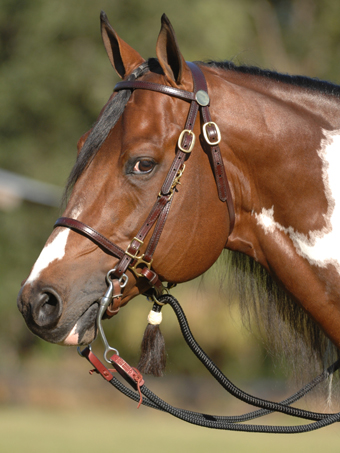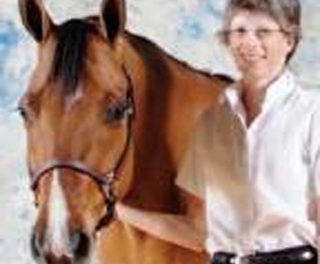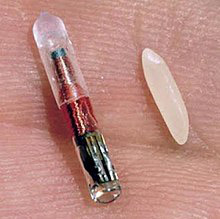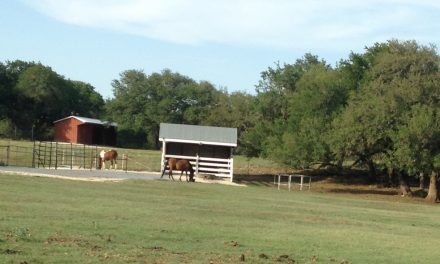THE WAY OF HORSES

A friend mentioned that she was having trouble keeping weight on her mare, Missy. Missy has always been an “easy-keeper”. I asked her a few questions which every horse owner should regularly review.
1. Age – it is frightening how quickly time passes. When I asked about Missy’s age my friend had to do some mental calculations. Based on when she got Missy – the year her oldest granddaughter was born, she decided the mare was 19. My friend was shocked when she realized Missy was becoming a “senior” horse.
2. Body Condition Score. My friend knew Missy was losing weight and by using the using the Henneke Body Condition Score we could assign a “score” to her condition. Horses are rated on a scale of 1 to 9. A horse with a score of 1 would have no body fat and be emaciated. A horse with a score of 9 would be extremely obese. A body condition score of 5 is considered ideal. This scoring would allow charting of Missy’s loss or gain history. It was determined Missy had a BCS of a 4. We estimated that Missy was probably a 6 when she was in her prime.
3. Dental care. Next I asked, “When was the last time Missy had her teeth looked at by a veterinarian or equine dentist?” This also took some thought. It may have been several years since Missy last had her teeth checked. I asked if she noticed if Missy was dropping feed while she ate, or if she was having trouble chewing hay. My friend wasn’t sure as she boards and doesn’t feed the mare. That evening I received a call – Missy was in fact dropping grain and having trouble chewing hay. A dental appointment with her veterinarian was scheduled.
4. Quality and amount of forage. The equine digestive system is designed to utilize nutrients from forage. That forage must be provided in the quality and quantity a horse needs. The horse is also designed to be a “trickle-feeder” – they graze approximately 18 hours a day when in a natural state.
I asked my friend about the type of hay that was being used at the stable. Because my friend boards she left the feeding up to the stable. She did know her contract states that Missy was to receive two flakes of hay in the morning, a flake at lunch and two flakes in the evening. She had no idea about the quality of the hay.
I had her take a scale and weigh a few flakes to get an average weight, so we could determine how many pounds of hay Missy was receiving each day. Also to let me know the color of the hay, how it smelled, if it had coarse stems or weeds, and if Missy was leaving some of the hay uneaten.
She reported back that the average weight of a flake was three pounds. Missy is receiving five flakes of hay a day, so that worked out to about 15 pounds of hay a day.
On average a horse should receive 1.5% to 2% of their body weight in forage a day. Missy should weigh about 1,000 pounds, which works out to 15- 20 pounds of good quality forage a day. She was being fed on the light end of the recommendation.
The hay seemed to be of good quality – it had a sweet smell, didn’t seem to have many stems or weeds and was a greenish/light tan color. But Missy seemed to be having trouble chewing as she was tipping her head to the side and dropping bits of wadded wet boluses of hay.
I asked my friend to see if the stable would allow Missy to have a second flake of hay at lunchtime and the evening meals. That would increase the daily amount to 20 pounds. My friend was willing to pay a little extra in board for Missy to have the additional hay. Another option will be for my friend to buy hay and bring in the extra hay on her daily visit.
5. Grain. Commercial “grain” products and supplements are used to make up for the nutrients which are lacking in the forage. These nutrients are protein, carbohydrates, fat, minerals and vitamins.
The boarding contract stated that each horse would receive five pounds of grain split between the morning and evening meals. I asked my friend to find out what type of grain was being used. She reported back that the grain was a 12% protein pellet from a reputable company, and was being fed the minimum amount recommended for a horse of Missy’s size and activity level according to the manufacturer’s feeding directions.
Missy was observed dropping pellets and tilting her head to the side while chewing. This and the problem chewing hay indicated a tooth problem.
At this point I recommended we wait to see how Missy does after she has her teeth done by the veterinarian and the extra hay was added to her diet. It is possible Missy may have to the 12% pellet amount increased or be switched to a product designed for older horses.
6. Water. Water is the most important nutrient in the diet. The digestive system requires it to dissolve nutrients and help move feed through the intestinal tract. It is needed to carry waste products out of the body. Impaction colic can be caused by a lack of water – very common in the winter when water sources are frozen and neglected.
Again, my friend leaves it up to the stable, so more investigation was required.
When Missy is in her stall she has access to an automatic water cup. The drawback to these “convenient” items is not being able to monitor how much water the horse is drinking – or even if they are drinking at all. Water cups are also neglected. Dead rodents, debris from the horse’s mouth and other dirt accumulates in them, and unnoticed malfunctions can occur if they are not checked several times a day. Missy’s cup was working, but had an accumulation of grain and dirt in the bottom.
The water source in Missy’s turnout area, which she shares with two other horses, is a large 100 gallon tub. My friend told me it was thick and green with algae – she couldn’t see the bottom of the tank.
This means a confrontation with the manager of the boarding stable. I suggested my friend ask if she could hang two water buckets in Missy’s stall, which my friend would maintain (she goes out every day to see the mare) – not adding any work to the stable manager’s duties.
The big tank is another issue. My friend decided to ask if she could dump and clean it, then maintain it as needed.
Luckily the stable manager agreed to both requests.
7. Internal parasite control. The next question I posed to my friend was regarding deworming Missy for internal parasites. The boarding stable requires all the horses be on a rotational schedule recommended by the stable’s veterinarian. That schedule is: an ivermectin product in the spring and after the first hard killing freeze in the winter; and one dose of a pyrantel pamoate or fenbendazole product in the summer.
That is a common rotational deworming schedule, so Missy was probably in pretty good shape. I suggested my friend ask her veterinarian about conducting a fecal egg count to ensure the program was working. I also emailed her the link to the American Association of Equine Practitioners Parasite Control Guidelines. https://aaep.org/sites/default/files/Guidelines/AAEPParasiteControlGuidelines_0.pdf
8. Hoof care. When evaluating a horse for proper care the hooves must be part of the equation. A horse in pain due to unbalanced hooves, thrush, cracks, laminitis, navicular, abscesses, white line disease, sole bruises or neglect is not going to thrive.
I knew Missy was on a regular schedule with an excellent farrier, and that Missy had her feet cleaned and checked daily by my friend. So no questions needed to be asked regarding hoof care.
9. Vaccinations. Vaccinations are used to help protect a horse from infectious diseases. Which disease to protect the horse from depends on location, use of the horse, exposure risk, and risk of reaction to the vaccine.
Missy’s veterinarian gives her the core vaccinations recommended by the American Association of Equine Practitioners for the following diseases: tetanus, Eastern / Western Equine Encephalomyelitis (EEE/WEE), West Nile Virus and rabies. Missy is also vaccinated for protection against equine influenza during the summer when she is going to horse shows. https://aaep.org/guidelines/vaccination-guidelines
Being vaccinated is not a factor in Missy’s weight loss, but the protection will aid Missy’s immune system in fighting off a disease to which she may be exposed. If she would happen to acquire a disease for which she was protected the severity and length of the disease may be decreased.
10. Observation. Knowing your horse may be the most important aspect of care. Many times the horse’s owner “senses” when something is not quite right – before the spike in temperature, before the refusal of feed, before the first severe pain of colic.
I asked Missy if she had any premonitions or a sense of unease when she thought about Missy or watched her. She didn’t. Other than the slight weight loss the mare was acting normal.
These 10 basic questions are ones every horse owner should review on a regular basis. In Missy’s case getting her teeth floated and increasing her hay did the trick.
* Earn Professional Certification as Horse Trainer, Stable Manager or Riding Instructor. All courses are online. Visit www.equinestudiesinstitute.org for information.



